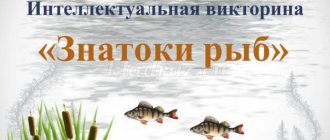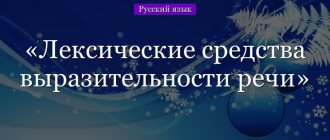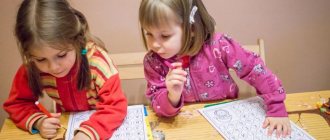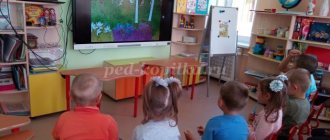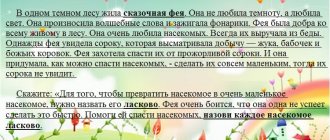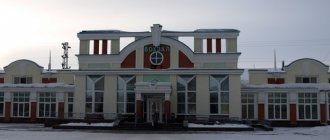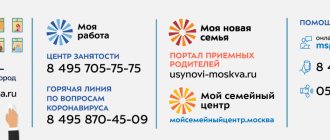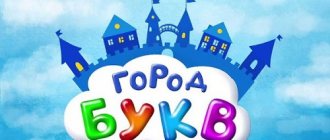Final event: lesson on familiarization with the surroundings: “Journey to the North”
Topic: “Animals of the North”
Goal: Expand children's understanding of the lifestyle of animals in the North.
Tasks:
Educational:
Ø Continue to introduce children to the animals of the North: polar bear, penguin, reindeer, seal, walrus; consolidate existing knowledge about the appearance, life, habits of these animals;
Ø Continue to introduce children to some of the adaptation features of animals of the North (walrus tusks, the “black nose” of a bear, penguins saving eggs)
Ø To form in children elementary ideas about the relationship and interaction of living organisms with their environment (they live in the wild; a bear accumulates fat).
Ø Introduce the work of polar explorers and the phenomenon of “Northern Lights”
Educational:
Ø Develop interest in educational videos about animals
Ø Improve technical skills in productive activities.
Ø Improve the ability to write stories and solve problem situations
Ø To develop the ability to apply acquired knowledge in practice.
Ø Develop a cognitive interest in all living things, a desire to gain new knowledge from books; curiosity, observation, imagination;
Ø Maintain interest in various natural phenomena.
Ø Develop communication skills;
Educational:
Ø Cultivate a love for animals and the ability to empathize.
Ø Cultivate friendly relationships in playful communication with peers.
Participants: preparatory group children, teachers, parents
Implementation period: week
ANNEX 1
Questioning parents: “Cognitive development of preschool children”
1. How does your child’s cognitive activity manifest itself?
2. How do you support your child’s educational interest?
3. How does your child surprise you?
4. Does it happen that cognitive activity started in kindergarten continues at home?
5. Can you call your child’s interests permanent?
6. How emotional is the child about an activity that is interesting to him?
7. What is done in the family to develop the child’s interests?
8. Does your child often ask questions?
9. How do you assess the level of cognitive activity of your child?
10. Are you satisfied with the quality of educational services for cognitive development provided at the preschool educational institution?
11. What kind of help do you need regarding the formation of cognitive activity in preschool children?
APPENDIX 2
DIDACTIC GAMES:
Didactic game “Bears” (role-playing).
Goal: consolidate knowledge about the polar bear
Polar and brown bears met and said hello. Then the white one asks the brown one:
Where do you live? - In the forest.
And I'm in the north on an ice floe. What color is your fur? - Brown.
And my fur is white. What do you eat? — Leaves, berries, fish.
I also eat fish, and also seals. What do you do in winter? — I sleep in a den.
But I don’t have a den, I sleep on an ice floe in the snow.
OUTDOOR GAMES
P/N: “Vazhenka and the fawns”
Several circles are drawn on the site. Each of them contains a female deer and two fawns. The wolf sits behind the hill (at the other end of the area). In the words of the presenter:
An important woman wanders in the tundra, with her fawns, explains to everyone everything that is not clear...
Small fawns are stomping through the puddles. Patiently listening to their mother’s instructions.
Playing fawns run freely across the tundra, bend over, eat grass, and drink water. To the words “The wolf is coming!” The fawns and fawns run away to their houses (circles). The wolf takes the caught fawn with him.
Rules of the game. Perform movements in accordance with the text. The wolf begins to catch only when given a signal and only outside the house.
P/N: “Polar bears”
Description of the game. At the edge of the area, which represents the sea, a small place is outlined - an ice floe. The driver standing on it is a “polar bear”. The remaining “cubs” will be randomly placed throughout the site.
“The Bear” growls: “I’m going out to fish!” - and runs to catch the “cubs”. Having caught one “bear cub”, he takes it to the ice floe, then catches another. After this, the two caught “bear cubs” join hands and begin to catch the rest of the players. At this time, the “bear” retreats to the ice floe. Having overtaken someone, two “bear cubs” join their free hands so that the caught one ends up between the hands, and shout: “Bear, help!” The “bear” runs up, greases the caught one and takes him to the ice floe. The next two caught also join hands and catch the rest of the “cubs”. The game continues until all the cubs are caught.
The last player caught wins and becomes the “polar bear”.
Rules of the game. At the edge of the area, which represents the sea, a small place is outlined - an ice floe, on which the driver stands - a “polar bear”
The remaining “cubs” will be randomly placed throughout the site
“The Bear” growls: “I’m going out to fish!” - and runs to catch the “cubs”
Having caught one “bear cub”, he takes it to the ice floe, then catches another
Two caught “bear cubs” join hands and begin to catch the rest of the players, “bear”
Having caught someone, two “bear cubs” join their free hands so that the caught one ends up between their hands, and shout: “Bear, help!”
The “bear” runs up, greases the caught person and takes him to the ice floe
The next two caught also join hands and catch the rest of the “cubs”
When all the cubs are caught, the game ends
The last player caught wins and becomes the “polar bear”
Note. A caught “bear cub” cannot slip out from under the hands of the couple surrounding it until the “bear” insults it.
When catching, it is forbidden to grab players by their clothes, and for those running away to run outside the boundaries of the area
P/N: “The Wolf and the Deer”
A wolf is chosen from among the players, the rest are deer. At one end of the area a place for the wolf is outlined. Deer graze at the opposite end of the site. At the signal “Wolf!” The wolf wakes up, leaves the lair, first walks around the herd with wide steps, then gradually narrows the circle around it. At a signal (the growl of a wolf), the deer scatter in different directions, and the wolf tries to catch (touch) them. The wolf takes the caught one to himself.
Rules of the game . You can only run out of the circle when given a signal. The one who is caught must follow the wolf.
PHYSICAL MINUTES:
"Polar bear"
Brown bear sleeps under a Christmas tree in the forest (“sleeping”)
And in a dream he dreams of a pot of honey (“stretching”)
In the North, the white bear wanders (“marching”)
But he just doesn’t suck honey like brown (“negative finger gesture”)
Our Umka is trying to catch fish (“they scoop first with their right hand, then with their left”)
To eat deliciously (“chew”)
And live – don’t bother (“they quite spread their arms to the sides”)
«About the north»
Icy winds are blowing (children wave their hands up)
Snowy, steep mountains (raise your arm up, stand on your toes)
They haven’t heard of summer there (palm pressed to ear, tilted to the sides)
You can hardly get warm there (hug yourself with your arms)
It is neither small nor big (bring your arms together and spread them apart)
This snowy continent (clap hands to chest levels)
"The deer has a big house"
The deer has a big house, (Hands above his head - depict the roof of the house) He sits, looks out the window. (We prop our cheek with our right fist, we support our right with our left hand) The bunny is running across the field, (Running in place) There is a knock on his door: (Stamping with feet, hands on the belt) “Knock-knock, open the door, (Imitation of knocking on the door one by one hand) There’s an evil hunter in the forest.” (Hands on the belt, turn right and left) “Bunny, bunny, run in! (Inviting hand movement) Give me your paw.” (We extend our hands with open palms)
APPENDIX 3
FICTION
“Why does a polar bear have a black nose?”
(Yukaghir fairy tale)
A polar bear walks across the winter tundra - you won’t notice him. It jumps from ice floe to ice floe - as if the wind is throwing snow. On the shore it will become like a hummock covered with snow. But all this is only when the bear’s nose is not visible. Because his nose is black. Everything is white all around, and a black ball is jumping on the ice floe - the bear is running. Because of his nose, he is often left with nothing - everyone has managed to escape from him! In ancient times, however, the bear was all white. And his nose was white.
Then he not only easily sneaked up on a walrus or a seal, but was not afraid to get close to a person either. The hunters go into the tundra, but he approaches the camp, scares the women and children, and steals food.
People got tired of this and decided to teach the bear a lesson. The hunters left the camp - the bear saw it. But he didn’t notice how they quietly returned and decided, as always, to take dried fish from people and scare the children. I've arrived. It was then that the hunters ran out to meet him. Everyone has a firebrand in their hand. The bear rushed in one direction, in the other - hunters, dogs, fire were everywhere. His entire skin became covered in black spots. But the worst thing happened to the bear when one of the hunters hit him on the nose with a burning firebrand. And the nose turned black. The bear escaped to the farthest ice floe, into the ocean. I sat there all winter, removing the black spots. New fur has grown and turned white. And the nose remained black forever. At first the bear didn’t understand what was going on: he couldn’t catch anyone! Everyone is running away from him! Then he realized: the animals see his black nose! Now, when a bear sneaks towards seals or seals, it covers its nose with its paw. That's how cunning!
And since then he doesn’t like to meet people. Better stay away from them!
“Why does a deer run fast” (Evenki fairy tale).
In ancient times, this was when many different birds flew in the sky, animals ran in the tundra and taiga. Only the Reindeer did not know how to run - they walked back and forth on the ground and extracted moss from under the snow. The winters were warm then, and the Reindeer did not freeze... But then strong frosts with fast Winds came to Earth, and great cold began. The deer began to freeze and die, but they did not know what to do, how to save themselves. One day, a herd of Deer was grazing near a high mountain, and such large Frost and Wind approached them as they had never seen before. Frost tells them: “I will freeze you.” I cannot freeze other animals and birds. They run and fly. I can't catch them in one place. And you just walk. And Frost and the Wind began to circle and whistle around the Deer. The deer were frozen and very afraid that they would all die.
And then one of the biggest and smartest Deer decided to save them from Frost and took them to another place. But Frost and the Wind came there too. The deer went even further - Frost and the Wind came again on the trail. It took a long time for the Deer to escape from the Frost and the Wind and they learned to walk quickly. There was a lot of moss in the new places. The deer lived a happy and satisfying life. And Frost and the Wind were very angry that they were playing with them, leaving them and leaving. And then the biggest Frost came to the Deer. The deer froze and began to quickly leave him. He follows them. The deer see: Frost is not far behind. They walked and walked quickly and then ran. They run - it’s warm for them. If they stop, it’s cold. They run - there is no Frost, Frost is behind. They stop - Frost and Wind are catching up. The deer ran even faster, and Frost and the Wind lagged behind them for a long time. From running, the Deer warmed up and decided to run away from the Frost and the Wind each time very quickly and far, far away...
So the Reindeer learned to run the fastest in the tundra, so fast and far that neither Frost nor the fast Wind could catch up with them.
Old Evenks say: “No one runs faster in the tundra than a deer, no bird flies. The bird flies, flies, and lands on the ground: it needs rest. And the Deer runs for a day, runs for two, runs for three, then runs some more... No one can keep up with the Deer. He races with the Wind and overtakes him. The deer is running - the tundra under its hooves is humming like a tambourine..."
G. Snegirev “To the Sea”.
Penguins go to the sea in the morning. They move through the gorges. On level ground they walk in single file. They roll down the mountains on their bellies. The first penguin will lie on its stomach - and down, followed by the second, third - and off they go...
Below they will dust themselves off, line up in a chain and hit the road again. They walk silently, all in step, serious.
Penguins will come to the steep bank, look down and shout: high, scary! The ones in the back are pushing against the ones in front, swearing: we must jump!
"Belyok." Gennady Snegirev.
Everywhere you look, there is only ice all around. White, greenish, shiny in the sun. I began to peer into the narrow strip of water that our ship cut through the ice.
And suddenly I saw two black eyes. They looked at me from an ice floe that slowly floated past.
- Stop! Stop! Someone's overboard! - I shouted.
The ship slowed down and stopped. I had to lower the boat and return to the ice floe.
The ice floe was covered with sparkling snow. And on the snow, as if on a blanket, lay a squirrel - a baby seal.
Seals leave their babies on the ice, and only in the morning the mother swims up to the baby, feeds him milk and swims away again, and he lies on the ice all day, all white, soft, like a plush. And if it weren’t for his big black eyes, I wouldn’t have noticed him.
They put the squirrel on the deck and swam further.
I brought him a bottle of milk, but he didn’t drink the squirrel, but crawled to the side. I pulled him back, and suddenly, first one tear rolled out of his eyes, then a second, and they started to fall like hail. Belek cried silently. The sailors made a noise and said that they should quickly put him on that ice floe. Let's go to the captain. The captain grumbled and grumbled, but still turned the ship around. The ice had not yet closed, and along the water path we came to the old place. There the squirrel was again placed on a blanket of snow, only on another ice floe. He almost stopped crying. Our ship sailed on.
"Brave little penguin" . G. Snegirev
One day I was going down to the sea and saw a little penguin. He has just grown three feathers on his head and a short tail.
He watched the adult penguins bathe. The rest of the chicks stood near the stones heated by the sun.
The little penguin stood on the rock for a long time: he was afraid to throw himself into the sea.
Finally he made up his mind and approached the edge of the cliff.
A small naked penguin stood at the height of a three-story building. The wind blew it away.
Out of fear, the little penguin closed his eyes and rushed down. He emerged, spun in one place, quickly climbed onto the rocks and looked at the sea in surprise.
It was a brave little penguin. He was the first to swim in the cold green sea.
RIDDLES AND POEMS
| In Antarctica, an important gentleman walks among the ice floes, He is dressed in a black frock coat, Waving his wings instead of hands. At least there’s a white tie on your neck, and flippers on your feet. Do you recognize Mr. Important Bird - ... (penguin)? Where there is cold, snow and ice, this wild beast lives. He is big, fluffy, white, And also a skilled fisherman (Polar bear) He is slow, fanged, His paws are like flippers, He has fangs like sabers, His fur is short but thick. Guess, guys, what kind of hero he is. (Walrus) He wears his horns like a royal crown. Eats lichen and green moss. Loves snowy meadows. (Deer) In Antarctica, among the ice, He walks around in a tailcoat every day. It has wings, but does not fly. He dashingly dives into the hole, A very important gentleman Minces here .... (Penguin) This snow-white bear is the largest, the bravest! He lives all his life in the snow, On a cold shore. We are your good neighbors, We are... (children: “Polar bears”). Sitting on a block of ice, I catch fish for breakfast. I am known as snow-white and live in the north. And the taiga brown brother is happy with Honey and raspberries. (Polar bear) He is slow, fanged, His paws are like flippers, And in the zoo pool it’s hot for the northern beast. (Walrus) | S. Makhotin Two poles. It's very cool at the North Pole, that's why it's North - that's understandable. But the South, But the South Pole is in the south! Where do the snowfalls and blizzards come from? Tired of thinking I said about it: The Earth is an Amazing planet! Penguin bird. I. Rodionov At the South Pole, among many ice floes, lives a clumsy feathered penguin. He is a bird, indeed, very funny: He dives and swims, but does not fly! The whole penguin is a huge flock of penguins waddling, wings spread, across the ice. They don’t build nests - it’s too cold - ice floes! But how do penguins hatch babies? It’s not easy to keep children at the pole - the frost there is about ninety degrees! They managed it! Penguin dads carry the egg and chick on top of their paws, hiding them from the cold under folds of fat. There's enough heat there for his “passenger”! Penguin. I. Millis Important, important, black and white, He walks boldly through the snow. The snow crunches under its paws, but the penguin runs forward. More and more quickly, picking up speed, Splash - from a running start straight into the water! Jump - the penguin flies back, the fish in its beak glitters. It’s important, it’s important, like a cat, He brings his catch home to His little children, to the Little Penguins - the naughty ones. Polar bear. He has a white fur coat and lives in the North. He knows how to catch a fish, and will swim up to it on a piece of ice. He covers his nose with his paw, so as not to stand out in the snow. Whoever sees him knows: It’s better not to meet the bear! So in the endless North, Lives for many years, the distant “Brown” brother, the Northern White Bear. Seal A shadow flashed under the water, flippers appeared: “Where are you going, Seal, this is dangerous! Look at the ngeutoni, Get out onto land, there are only one fish there, Listen to me.” Suddenly the seal got angry and moved its whiskers: “Where should I sit all day - We’ll figure it out ourselves.” |
TEACHER'S STORIES ABOUT ANIMALS
This is a seal . The cold waters of the North Sea wash the rocky shore. And on the shore, as on a beach, there are seals. They have a round mustachioed head, round eyes, and flippers instead of paws. The seal's back and sides are dark and spotted, and its belly is lighter. It is very uncomfortable for seals to move on the ground. But seals swim very well. They feed on fish, shrimp, crabs, and shellfish. In addition to dense, waterproof fur, the seal has a thick layer of fat under its skin. Baby seals are called “belki” because of the white color of their coats.
Reindeer.
Reindeer are a resident of the Far North. He is not afraid of either severe frosts or deep snow. He has wonderful fur - gray, thick, fluffy, soft. It becomes especially warm in the winter months, when the most severe northern frosts set in and snowstorms rage. Reindeer hooves are special. They are wide and can be extended like splayed fingers. This allows him to quickly move through loose snow and swamps. It feeds on grass and moss, which is called “moss”. Since ancient times, the man of the North has tamed the deer. From childhood, parents teach their children to manage deer, catch and drive them. northern owe their existence to this noble animal . Reindeer provides them with food , skin for clothing, and is an indispensable means of transportation in northern off-road conditions. Reindeer differ from their other counterparts in that both females and males have antlers. These animals have wide hooves. Which allow them not to fall into the snow (showing hoof marks)
.
The fur of this animal is long, thick, and wavy. Reindeer are quite large animals. It reaches 2 meters in length and 1 meter in height. These animals prefer mountainous areas. Where there is a lot of moss and alpine grasses that make up their food. Reindeer always remain wild animals in captivity; they become more tame, but a small oversight by the owner - and the proud, handsome one goes wild again. Northern peoples are entirely dependent on reindeer , and as a rule, their entire life passes with reindeer . They wander after the deer through the pastures and constantly provide places with rich food for the deer . In the north, a rich person is not the one who has a lot of money, but the one who has the most deer.
A penguin is a bird. But not all birds can fly. The penguin, for example, does not fly. In his white shirtfront and black tailcoat, he looks like a little man, walks on his paws, waddling funny. Penguins have short feathers, but they tightly cover their body, like a fur coat. And their main protection from frost and cold winds is large reserves of fat under the skin. Penguins live in large flocks and raise their chicks together. And they also hunt in groups - this makes it easier for them to protect themselves from enemies: one of them will definitely notice the danger and warn the others. It is very interesting that penguins do not build nests, but hatch their chicks in the folds of their bellies, holding the egg with the baby on their paws. Penguins cannot fly, but they swim and dive very well. They feed on fish, but only adult penguins go to sea, and the cubs remain on the shore. Penguins are very friendly, and this helps them survive in the harsh conditions of the north.
The polar bear is the main inhabitant of the northern expanses. This is the largest predatory animal on Earth. The bear's thick white fur and thick layer of fat protect it from severe frosts. The polar bear does not fall asleep, because it is provided with food all year round. At the beginning of winter, female bears emerge from the coastal ice and dig a wintering hole on the shore in the snow drifts, where they give birth to 1-2 cubs. The bear stays in the den until the children grow up. They grow quickly. They then leave the island and move onto the ice. White fur makes the bear invisible among the snow and ice. It is thick and warm, helping to hunt seals by sneaking up on prey. He hides his black nose with his paw so that he doesn't give it away. There is also wool on the soles of the paws, it protects them from frost and they do not slip on the ice. Strong paws, with sharp claws, strong, sharp teeth, help to eat prey. Knows how to dive and swim well under a thick layer of ice. There are swimming membranes on the fingers. Most importantly, his body is covered with thick skin and a thick layer of fat. The polar bear swims well, dives, runs, hunts, is very active, and climbs ice walls well.
Compose a comparative story about white and brown bears (compound sentences with the conjunction a).
The brown bear lives in our forest, and the white...
A brown bear has brown fur, and a white bear...
The brown bear eats raspberries, honey, fish, and the white bear...
The brown bear sleeps in a den, and the white...
Write a story about an animal according to plan. 1.Who is this? 2.Where does he live? 3. Appearance (body parts). 4.What does it eat? 5.How does one protect oneself from enemies?
APPENDIX 4
Naughty bunny"
I. p. legs and arms are free. On the count of 1-8, jump as you wish (2p).
-The animals looked at us and ran off to their own affairs.
- Well, we start playing 1,2,3,4,5.
- I suggest we play. Let's split into two teams. (Children come up with a name)
RELAY RACES:
Run to the iceberg"
Educator: I’m very glad that you coped with all the tests and here you are. I also have a surprise for you, but first guess the riddle:
“How beautiful are the poles , The skies sparkle there! A bright flash here and there, but it’s not fireworks.
Now, I will show you the wonder of the world, the northern lights ! (Showing on ITC).
Well, it’s time for us guys to go back to kindergarten.
Take a snowflake
- “1,2,3 - take us back!” (Snowstorm)
- Did you like the trip , what did you remember about it? - Thank you for your attention. Until next time.
Children leave to the music (March).
APPENDIX 5
Story drawing for children of senior preschool age “ Reindeer ”
.
Program content:
1. Continue to teach children of a deer in a drawing : branched antlers, thin legs, a short tail, a torso with a neck together.
2. Fasten in different ways with a brush: with the whole brush, with the end of the brush, with a poke (snow, reindeer moss)
.
3. Clarify and expand children's knowledge about reindeer .
4. Cultivate interest in visual arts.
Progress of the lesson:
1. Introductory conversation.
- Guys, I’ll tell you a riddle now. If you guess it, you will find out what will be discussed in class.
From the branched, slender horns a shadow is visible on the snow. Who is running towards us with the wind arguing? This is a northern... ( deer )
- Why do you think it’s a deer ?
- Look at the pictures. What can you tell us about what a reindeer ?
Children name the parts of a deer's , their shape, location and purpose.
Generalization: This is a very beautiful, proud, hardy animal, small in stature, deer have an oval body along with a neck, thin strong legs, a short tail, beautiful branched strong horns, with which it protects itself from enemies. With strong hooves, the deer shovels the snow , obtaining food - reindeer moss moss . Herds roam from place to place in search of food together with reindeer herders . A deer can run through deep, loose snow without falling through. It has warm, thick fur, which is used to make clothes and shoes. about deer : “ The deer carries , the deer feeds , the deer clothes .”
Show:
1. – What color is a deer ? (gray)
We need to prepare gray color.
2. draw the largest part of the body – the torso.
3. head, depending on what your deer : bend over or raise.
4. neck, connecting the head to the body
5. ears (by dipping)
6. thin, branched horns. (both male and female)
7. short legs with wide hooves at the ends
, paint in white that grows from above.
9. eye
Physical exercise.
We walk through snowdrifts, steep snowdrifts.
Raise your leg higher, pave the way for others.
We walked for a very long time, our little legs were tired.
Now let’s sit down, rest, and then go for a walk.
— And now you will draw a picture of “ Reindeer ”
.
2. Children's . Individual work while drawing : tips, clarifications, reminders.
3. Conclusion. Children lay out their work on the floor, examine it, and share their impressions: whose drawing they liked and why.
deer run swiftly along a path untrodden by anyone,
For them the white tundra is tireless, for them the distant mountains are not far away. (A. Bazhenov)
.
APPENDIX 6
APPENDIX 7
Applique lesson in the preparatory group: “Penguin”.
Software tasks:
Ø Learn to cut out a penguin using silhouette cutting and familiar techniques.
Ø Strengthen the ability to navigate on a sheet of paper; Use scissors and appliqué equipment correctly.
Ø Develop an eye; cognitive processes; small muscles of the fingers.
Ø Foster a desire to work with paper; the ability to evaluate both your own work and the work of your comrades.
Preliminary work:
Reading stories about Antarctica; looking at illustrations of penguins; teacher's story about penguins and their habitat.
Equipment:
Demonstration material –
sample; drawing diagram of the cutting sequence; penguin illustration; display equipment.
Handout -
a sheet of blue paper with an ice floe drawn on it; black and white rectangles; scraps of paper to supplement the work; equipment for application.
Progress of the lesson: The teacher asks the children a riddle:
This bird does not fly in Antarctica, but is dressed in a black tailcoat with a white shirt.
Can swim and dive, waddle. (penguin)
- Yes, that's right, it's a penguin. Look how important he is (showing an illustration of a penguin)
— Guys, G. Snigerev wrote a lot of stories about penguins. I want to introduce you to one of them. The story is called “Penguin Beach” (reading the story).
Content questions:
- What is the name of the story? - Who wrote it? - Who is the story about? - Where did the penguins live? (on an island near Antarctica) - What is the name of the penguins’ habitat in the story? (Penguin Beach)
— How did the penguins greet the people who came to visit them? (they crowded around the boxes, shouted loudly, talked, pecked at the bags)
— What did the penguins make on a sheet of plywood? (dancing)
- How does the story say this? (a penguin will run across the plywood, come back, run again, and even stomp its paw!)
Fizminutka
"Funny Penguins".
- Who can describe the penguin? What does a penguin have? what color is the head, back, tummy, wings, paws, beak?
— Today in class I will teach you how to cut out a penguin from paper.
— Look how I cut out a penguin from paper using the silhouette cutting technique, i.e. I’ll immediately cut out the tail, back, head, beak, wings. I will only cut out the belly separately.
— I put the scissors in the lower right corner of the black rectangle, start cutting out the tail, slightly rounding it, then the scissors run up, after which we round the head. I turn the scissors towards the back and then make a turn and cut out a triangular wing. When the wing is ready, the scissors return to the tail and finish it. Then I cut out the belly - a white oval. Then I lay out the parts on a sheet of paper and then glue them on. I supplement the work with the beak and paws.
Consolidation.
- What are we going to cut out?
— What cutting technique do we use?
- Who can tell you, with the help of a drawing, the sequence of cutting out a penguin?
Independent work.
In the process of children's activities, the teacher encourages independence, accuracy, and creativity. The teacher provides assistance to those children who find it difficult to work.
After independent work, children examine the work.
— What did you learn to cut?
— What technique did you use in your work?
- Find the funniest penguin; which penguin is most similar to the real one; is there a sad penguin on the ice floe; funny?
Topic: “Animals of the North”
Goal: Expand children's understanding of the lifestyle of animals in the North.
Tasks:
Educational:
Ø Continue to introduce children to the animals of the North: polar bear, penguin, reindeer, seal, walrus; consolidate existing knowledge about the appearance, life, habits of these animals;
Ø Continue to introduce children to some of the adaptation features of animals of the North (walrus tusks, the “black nose” of a bear, penguins saving eggs)
Ø To form in children elementary ideas about the relationship and interaction of living organisms with their environment (they live in the wild; a bear accumulates fat).
Ø Introduce the work of polar explorers and the phenomenon of “Northern Lights”
Educational:
Ø Develop interest in educational videos about animals
Ø Improve technical skills in productive activities.
Ø Improve the ability to write stories and solve problem situations
Ø To develop the ability to apply acquired knowledge in practice.
Ø Develop a cognitive interest in all living things, a desire to gain new knowledge from books; curiosity, observation, imagination;
Ø Maintain interest in various natural phenomena.
Ø Develop communication skills;
Educational:
Ø Cultivate a love for animals and the ability to empathize.
Ø Cultivate friendly relationships in playful communication with peers.
Participants: preparatory group children, teachers, parents
Implementation period: week
Final event: lesson on familiarization with the surroundings: “Journey to the North”
| MONDAY | ||
| DIRECT EDUCATIONAL ACTIVITIES | ||
| 9.00-9.30 | 1. Drawing (productive activity): “Umka saw the northern lights” Goal: to cultivate interest in the natural world, a desire to learn new things. | |
| 9.40-10.10 | 2. FEMP (Cognitive Development) Topic: “Teach Umkus to compose and solve arithmetic problems”, “Mathematical dictation: “Polar Bear”” Goal: continue to teach how to compose and solve arithmetic problems on addition. Improve your ability to navigate on a sheet of squared paper. | |
| 10.20 – 10.50 | 3. Physical development (motor activity): Topic: “Visiting Umka” Goal: repeat exercises in throwing a ball, developing dexterity and eye. | |
| ORGANIZED ACTIVITIES FOR CHILDREN AND ADULTS | ||
| Educational areas | I HALF DAY | II HALF OF THE DAY |
| Cognitive development | Presentation for children: “The Poles of the Earth – North and South. Northern Lights" Purpose: to give an idea of the climatic conditions of the North and South Poles; | Watching the cartoon: “Umka” Goal: Continue to introduce children to the animals of the North |
| Speech development | Teacher's story about a polar bear Goal: Continue to introduce children to the polar bear, its habitat, and habits. | Nenets fairy tale: “Polar bear and brown bear” Purpose: to develop cognitive interest |
| Social and communicative development | CHHL: fairy tale “Why does a polar bear have a black nose” (Yukaghir fairy tale) Purpose: to consolidate existing knowledge about the appearance, life, habits of these animals; Didactic game “Bears” (role-playing). Goal: consolidate knowledge about the polar bear. | D/I: “Compare the polar and brown bear” Goal: to consolidate knowledge about the habits and habitat of animals. Compose a comparative story about white and brown bears Goal: compose complex sentences with the conjunction a |
| Artistic and aesthetic development | Offer silhouettes of northern animals for cutting out. Purpose: to practice cutting | Offer to make a friend for Umka Goal: to develop an interested and caring attitude towards animals - polar bears |
| Physical development | Physical education Purpose: to help have fun, relieve tension, and get a feeling of physical relaxation. | P/I: “Polar bears” Purpose: to exercise the ability to run without bumping into each other; |
| TUESDAY | ||
| DIRECT EDUCATIONAL ACTIVITIES | ||
| 9.00-9.30 | 1. Speech development: CHHL: G. Snegirev: “Brave little penguin” Goal: To develop interest in the life of animals of the north | |
| 9.40-10.10 | 2. Application (productive activity): Topic: “Little Penguin” Purpose: to promote the development of fine motor skills of the hands with application | |
| ORGANIZED ACTIVITIES FOR CHILDREN AND ADULTS | ||
| Educational areas | I HALF DAY | II HALF OF THE DAY |
| Cognitive development | Watching a video about penguins Goal: To cultivate a caring attitude towards our smaller friends, the animals of the North. | Watching the cartoon: “Little Penguin Lolo” Goal: to bring joy to children. |
| Speech development | CHHL: G. Snegirev: “Penguin Beach” Goal: To develop interest in the life of animals of the north D/I: “The Fourth Odd” Goal: to consolidate knowledge about the animals of the north | D/I: “Who has whom?” Goal: consolidate knowledge about animals of the north and their cubs Offer logical tasks - labyrinths: “Help the little penguin swim to the fish” Goal: develop visual attention |
| Social and communicative development | Examination of illustrations: “Inhabitants of the North” Conversation: “Inhabitants of the Far North in the Zoo” Purpose: to tell children about keeping animals in the zoo, about their feeding regime and caring for them. | Problem situation: “What would happen if penguins began to fly like birds” Purpose: to teach p |

